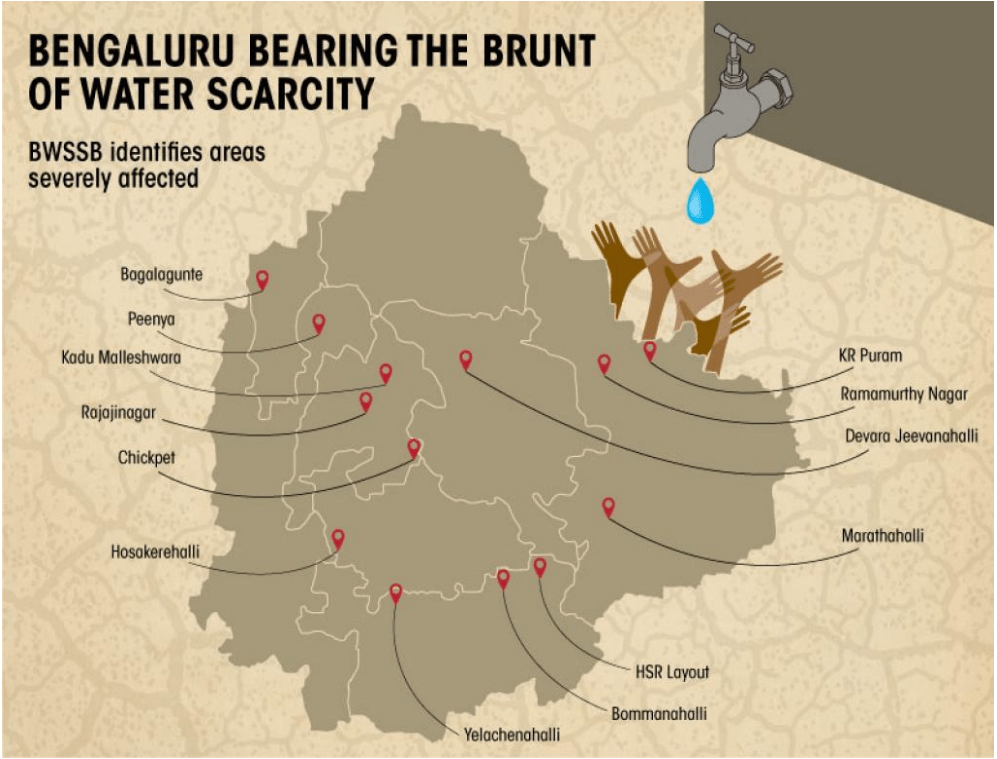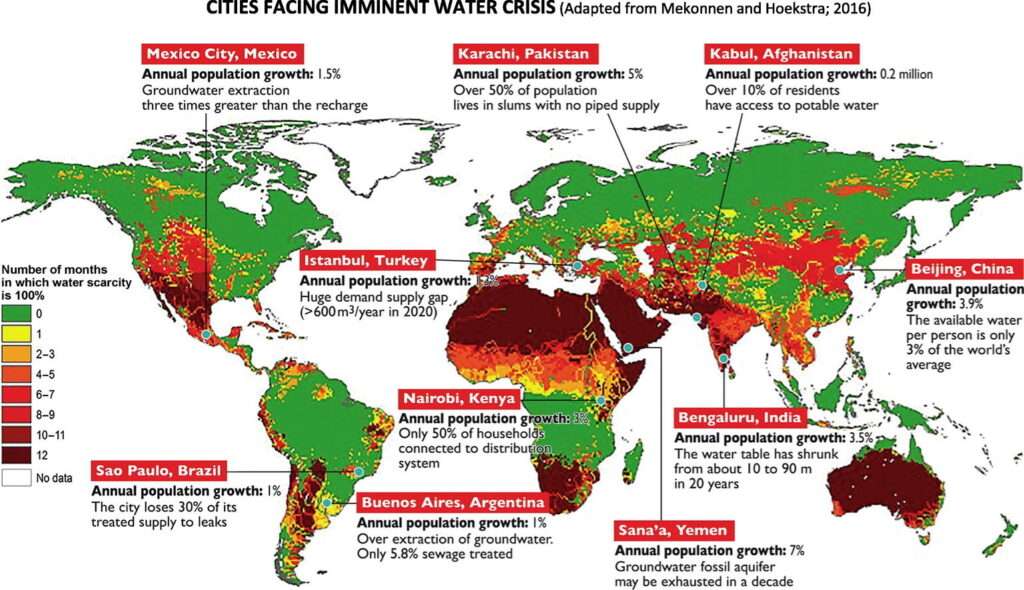From Bengaluru to Chennai, Indian cities are facing a severe water shortage. Here’s what’s causing it, how the government is responding, and what we can learn from global solutions.
💧 What Is a Water Crisis?
A water crisis occurs when the demand for water exceeds the available supply, leading to shortages that affect daily life, agriculture, industry, and health. In India, this crisis is driven by a combination of factors, including overpopulation, over-extraction of groundwater, pollution, and climate change. Currently, about 35 million people in India lack access to safe drinking water, and 678 million lack access to proper sanitation facilities.
🕒 Why and When Did the Crisis Begin?
India’s water issues have been escalating over the past few decades. Rapid urbanization, industrialization, and agricultural demands have strained water resources. In 2019, Chennai faced a severe water shortage, with its main reservoirs drying up, leading to a crisis that affected millions.
🏙️ Which Cities Are Suffering the Most?
Several major Indian cities are currently grappling with water scarcity:
Bengaluru: Over-extraction of groundwater and reliance on distant water sources like the Cauvery River have led to significant shortages.
Chennai: Faced a “Day Zero” scenario in 2019 when reservoirs dried up completely.
Delhi: Rapid urban growth and pollution have severely impacted water availability.
Hyderabad and Mumbai: Both cities face challenges due to overpopulation and inadequate infrastructure.
📊 How Many People Were Affected?
Water crises have had significant impacts on urban populations:
Chennai (2019): Approximately 10 million residents were affected by the water shortage.
Bengaluru: Reports indicate that nearly 50% of the population faces water scarcity during peak summer months and has been experiencing this from past 3 years continously.
Delhi: Around 40% of slum areas report regular water shortages
These shortages not only affect daily life but also have economic implications, disrupting industries and livelihoods.

🏛️ What’s the Government Doing?
The Indian government has initiated several programs to address water scarcity:
-
Jal Jeevan Mission (JJM): Launched in 2019, this mission aims to provide piped water to every rural household by 2024. It focuses on ensuring 55 liters of water per person per day through tap connections.
-
Jal Shakti Abhiyan: A campaign for water conservation and rainwater harvesting.
-
Namami Gange Programme: Focused on cleaning and conserving the Ganga River.
-
Atal Bhujal Yojana: Aims to improve groundwater management.
-
Urban Water Conservation Investment: The government plans to invest approximately $300 million over two years to mitigate urban flooding and conserve water in major cities like Mumbai, Chennai, and Bengaluru.
However, there are serious concerns:
❌ Lack of consistent enforcement
❌ Urban planning isn’t water-focused
❌ No penalties for overuse or misuse
Implementation remains the biggest challenge
🔮 Is It Going to Get Better or Worse?
According to the NITI Aayog report, by 2030, India’s water demand will be twice the supply. Without serious action, the crisis will worsen:
Water tables will fall further
More cities could face “Day Zero”
Even rural areas will feel the heat
🌐 Is This Just India’s Problem?
No, this is a global issue.
Countries like the USA, Mexico, and South Africa are also dealing with water stress. Even tech companies are under scrutiny for consuming large volumes of water to cool data centers.
(Source: The Guardian)

🛠️ Solutions: What Can Be Done?
To mitigate the water crisis, several measures can be implemented:
Infrastructure Development: Investing in efficient water supply systems and reducing leakage.
Rainwater Harvesting: Mandating and maintaining systems to capture and store rainwater.
Wastewater Treatment: Recycling and reusing wastewater for non-potable purposes.
Set up local water bodies and revive lakes
Public Awareness Campaigns: Educating citizens on water conservation practices.
Critics emphasize the need for stricter enforcement of water management policies and greater transparency in governmental initiatives.
🌍 Global Perspectives: Lessons from Abroad
India can learn from global examples:
Cape Town, South Africa: Implemented strict water usage regulations and public awareness campaigns to avert a “Day Zero” scenario.
Bogotá, Colombia: Ended year-long water rationing through improved rainfall, conservation efforts, and infrastructure upgrades.
Adopting similar strategies could help Indian cities manage their water resources more effectively.
👥 What Should You Do as a Citizen?
You can make a big difference:
-
Fix leaks in your home
-
Use water-saving taps and flush systems
-
Harvest rainwater — even in apartments
-
Educate others about water use
-
Support policies and politicians that prioritize water sustainability
🧠 Final Thoughts: Time to Act
India’s water crisis isn’t tomorrow’s problem. It’s already here.
If cities, citizens, and the government don’t act together, we could see widespread conflict over water in the near future.
But with the right action — and a little inspiration from global success stories — we can overcome.
this.What measure you think should government and people take? Let me know in the comment
